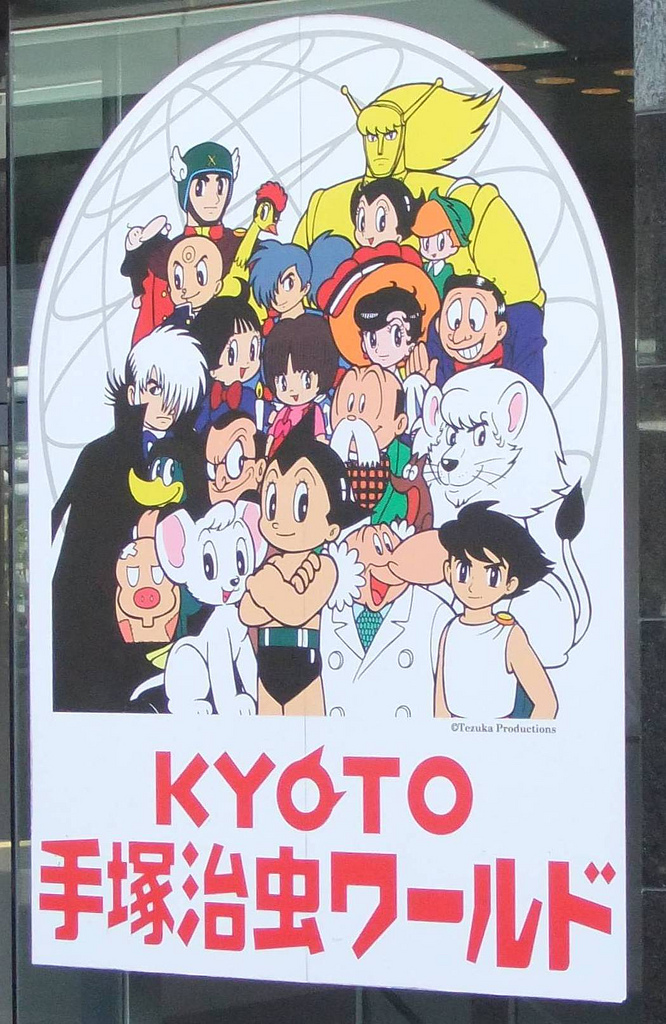
Kyoto sign
It was a bit sad to check out of the Ryokan Shimizu. Though we had only stayed for a few days, the girls loved the tatami room and were taken by the staff. The friendly man gave each of them a set of chopsticks, and the girls went into a huddled consultation and asked our permission to give him a Canada keychain. It was rather worn, but he graciously accepted the gift which thrilled the girls. T
The other guests wished us well, and we wondered if we would ever see them again. We packed waved goodbye and walked the few blocks to Kyoto Station, where we stowed our luggage in a locker so we could easily retrieve it for our trip back to Tokyo.
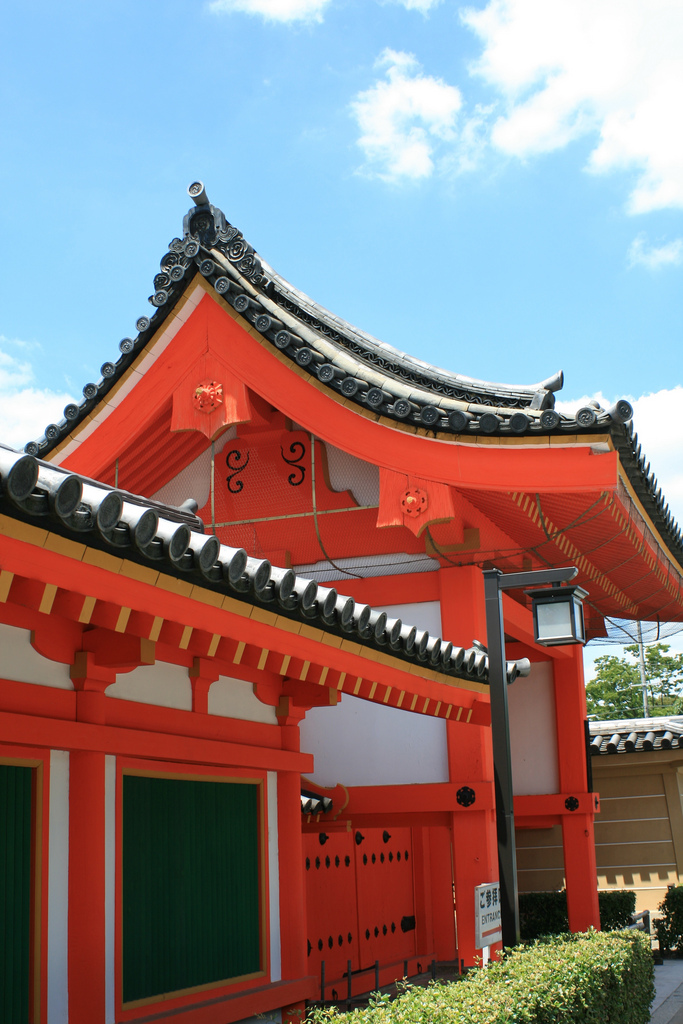
Breakfast was pastries and coffee in Porta, then we took the Kyoto city bus to see Sanjusangendo temple. That name sure is a mouthful, and even worse was the bus stop, called Hakubutsukan/Sanjusangendo Mae! This bus was just as crowded as all the others we had ridden in Kyoto, and we were happy to get off at the temple.
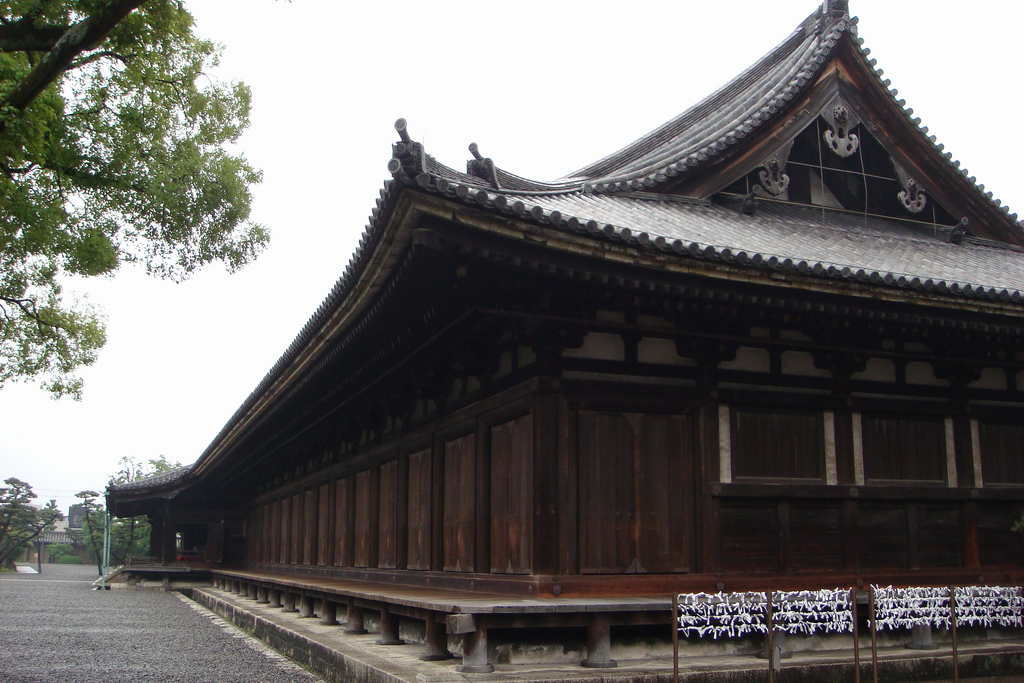
Sanjūsangen-dō Temple
We found the gate in the cream-colored wall surrounding a parking area and the Sanjusangendo temple itself. Apparently when it was built centuries ago, there were more buildings in a large complex, but they all burned down in a fire and only the main one was rebuilt. It is supposedly the longest wooden building in Japan, and we could believe it when we saw it. It looked like a study in drawing with vanishing-point perspective, with its evenly-spaced dark wood beams against the white stucco walls.
We decided to look around before entering, and were a bit disappointed at the lack of interest. There was a corridor outside which they said was used for archery contests, it was so long. But after the other gardens we had seen this week, there was only a little pond and a few trees. So we went inside, wondering if we had made a bad choice for our last temple of the trip.
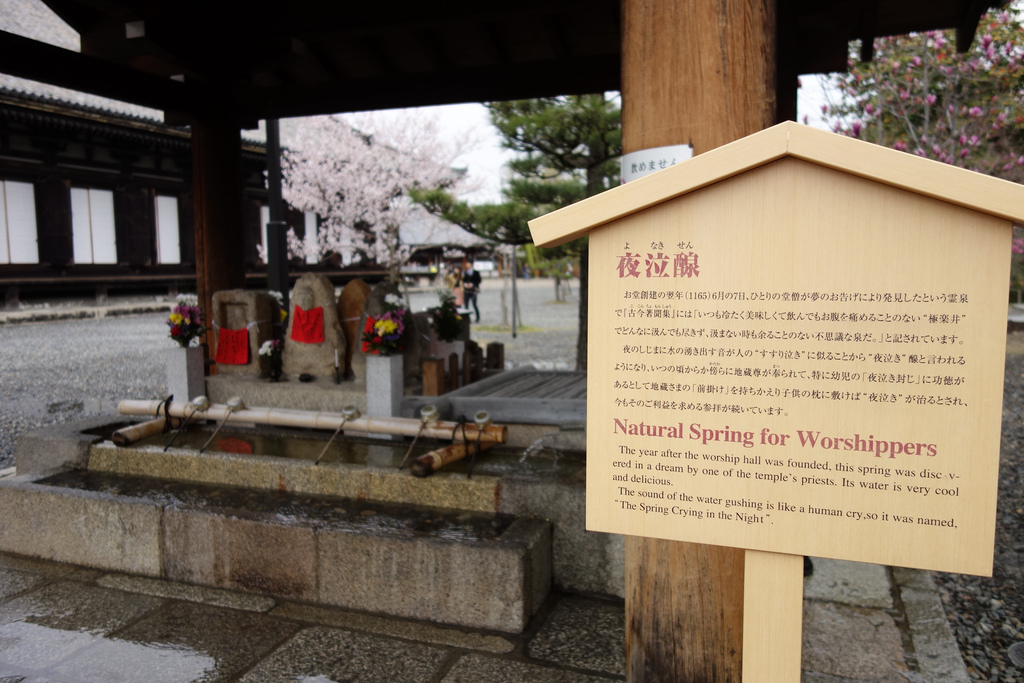
Sanjūsangen-dō Temple
Well, we need not have worried! The inside was awesome, dimly lit and filled with gold-leafed statues. The smell of incense was heavy in the air, and the whole building felt dark, old, and venerable. The layout was fascinating because there was a walkway on the left and the statues on the right, and the crowd went filing slowly past. The thousand statues of Kannon, the goddess of mercy, glimmered and almost seemed to move.
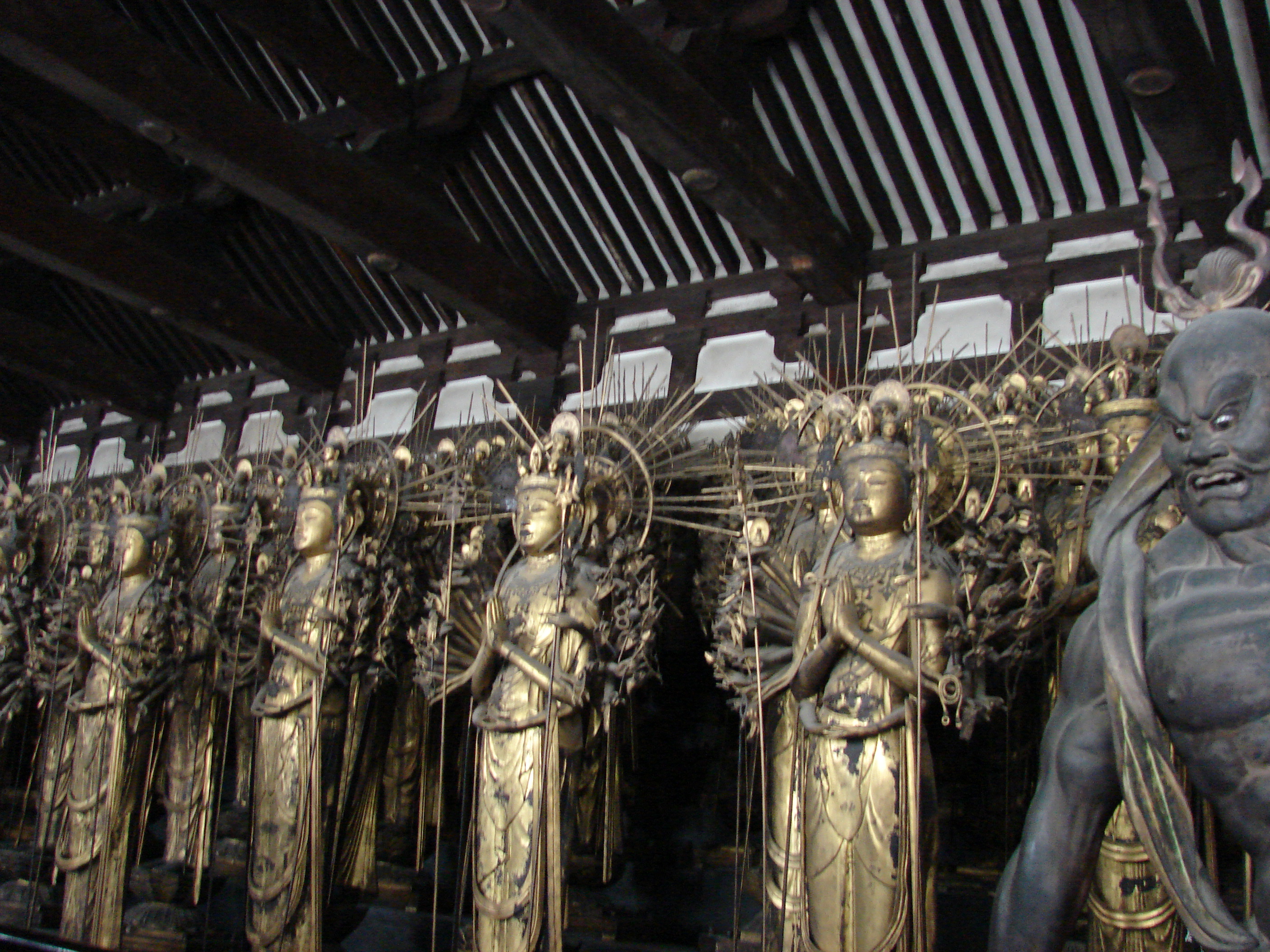
Emma complained a bit loudly to Emi that these were supposed to be thousand-armed statues, but there were clearly a lot less. An older Japanese man near us smiled and asked if he could explain. His speech was heavily accented and slow, but understandable. He said that he was a retired accountant and liked to practice English when possible.
The statues all had forty-two arms, he explained. The girls took the time to count the closest one, and he patiently waited. Then he said that two of the arms are normal arms, but the others are magical. They exist in all twenty-five worlds in the Buddhist belief system. If you multiply forty arms by 25 worlds, you get one thousand. Emma did the math, but Emi was puzzled until Emma whispered to her that other arms are invisible and only fairies can see them. This wasn’t that close but everyone was smiling so we left it at that!
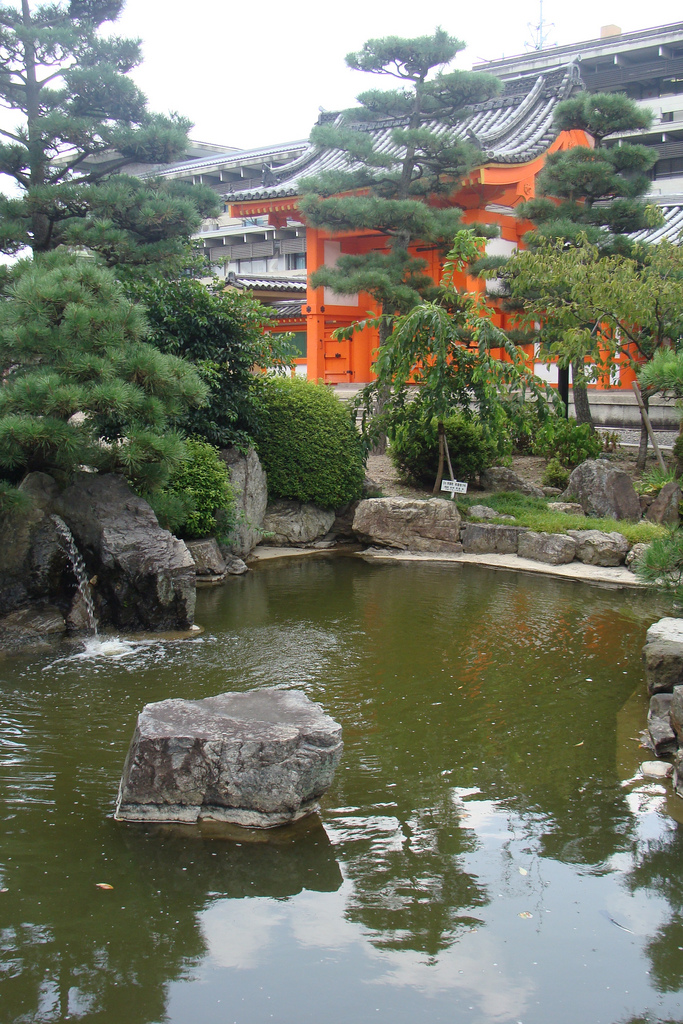
So then the girls asked the man why the goddesses have so many arms, and he said that the Kannon wants to help ease human suffering, so needs the arms to solve problems in the different worlds. He also pointed out that there are eleven faces on the statues so that they can see the problems and help. He had no idea why the number was eleven.
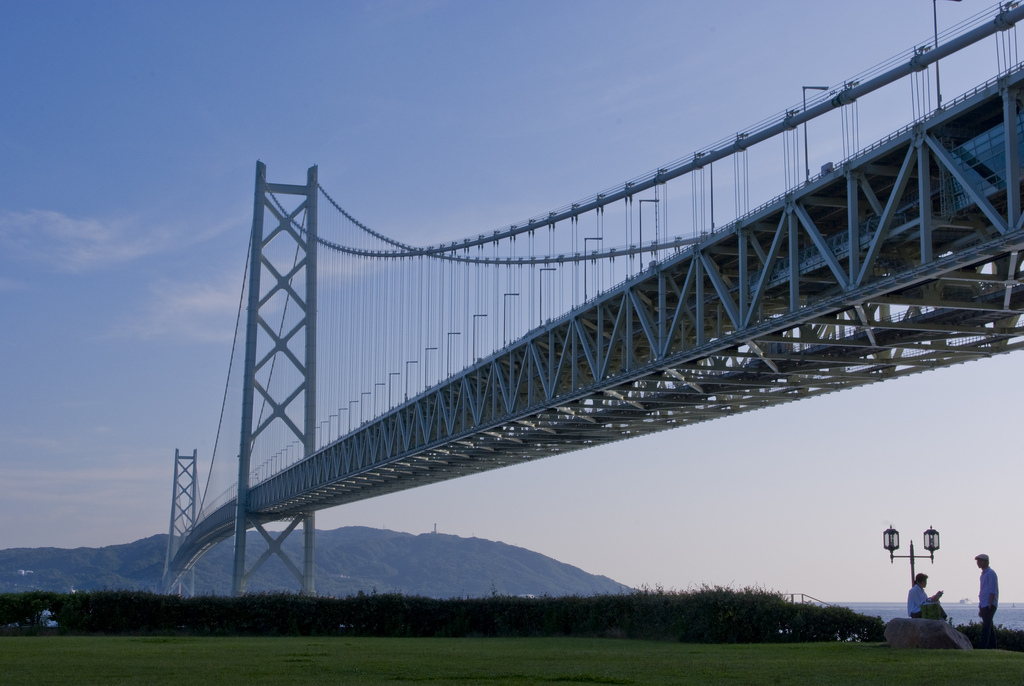
Sanjūsangen-dō
We walked down the aisle together, commenting on the statues. He pointed out the impressive guardian figures that looked like demons and told a brief story about each. The girls were really impressed by his knowledge, but he was actually summarizing the signs, which were all in Japanese, from what we could tell. Still, it was interesting to learn more about the figures we were seeing.

Thousand-armed Kannon (木造千手観音坐像, mokuzō senjū kannon zazō) at Sanjūsangen-dō
The main Kannon statue was very large, in the center of the ranks of smaller Kannons. There were dozens of candles and incense burning around it. The accountant showed that the candles had writing on them. The writing was different prayers, so when the candle burned down, the prayer would be granted. He bought and lit a candle of his own, saying that it was for good health.
We said good bye to the nice elderly man when we left the building and stood blinking in the sunshine. We explained that we were on our way back to Tokyo, and he said that he was going to the station, too, because he was heading home to Yamaguchi prefecture. He asked if we could have tea together at the station, and we agreed to do so.
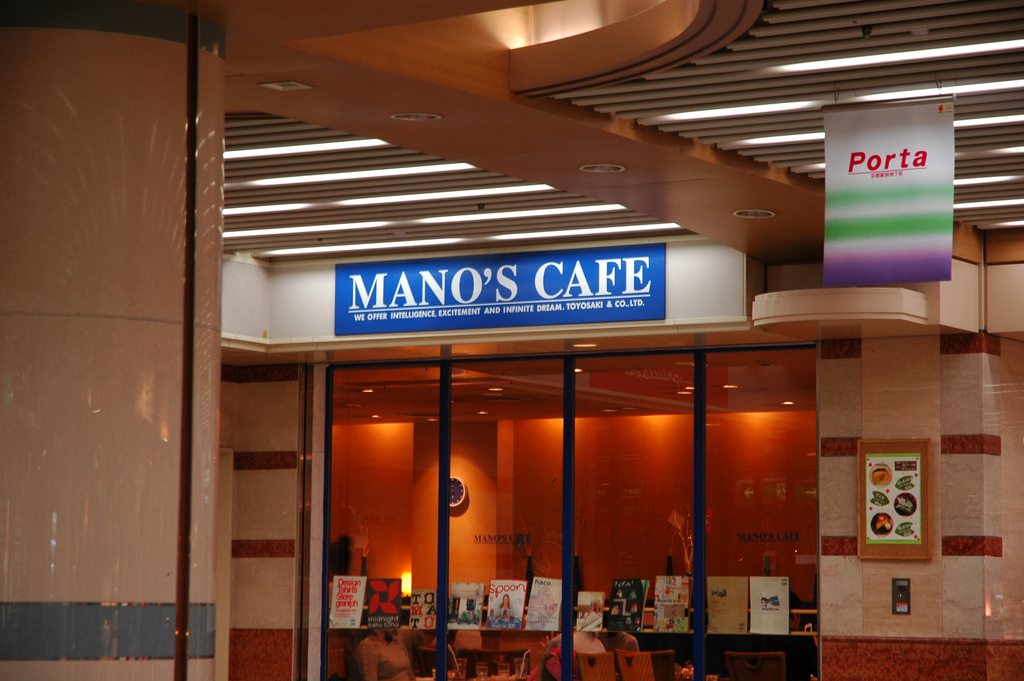
Mano’s Cafe Porta
We rode the bus back and stopped in a small cafe in Porta that had tea and desserts. We talked for about an hour over roll cakes and coffee, then the old man excused himself, saying he needed to catch the train. He thanked us again and again for taking the time to talk with him, and said he would pay his part of the bill on the way out.
We gathered out things and went to pay, and found out that he had settled the entire bill. The staff refused any money from our family. We looked around for him, but he was gone. So with mixed feelings we boarded our own train back to Tokyo.
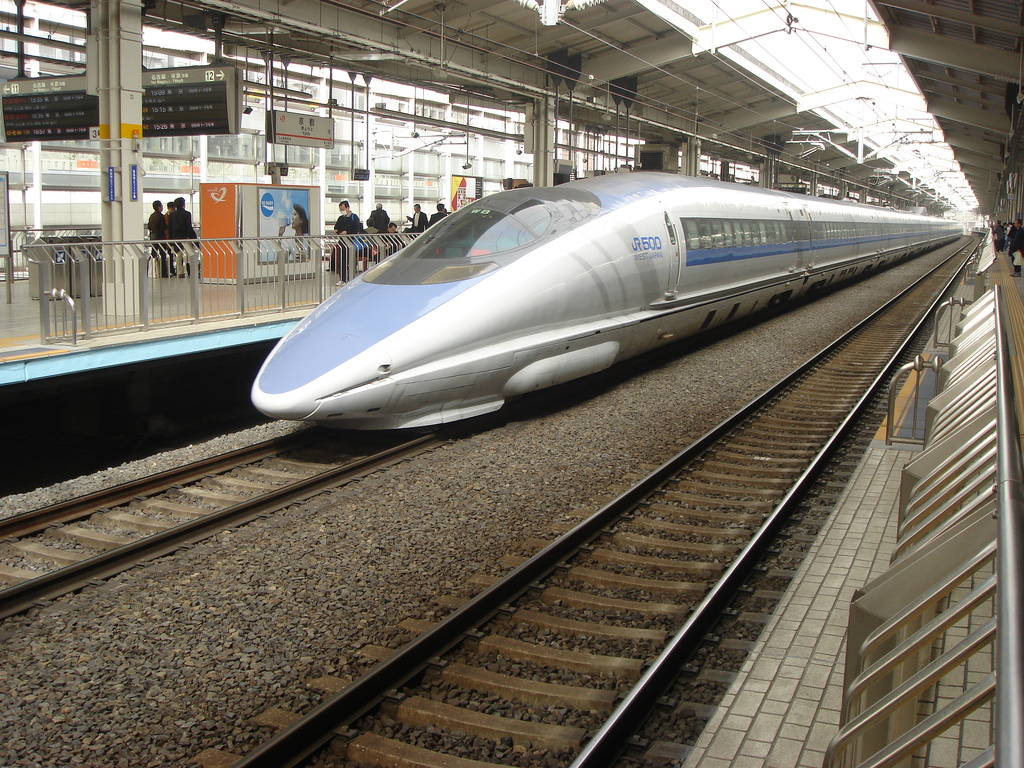
JR500 Shinkansen @ Kyoto
The shinkansen was just as exciting as the first time we rode it. It was amazing to think we were traveling in two and a half hours a distance that historically took travelers fifty-two days. We still did not see Mount Fuji, but we had beautiful views of the ocean, little villages, and tea fields. The hills were lush and green, with an occasional shrine or temple poking out of the trees.
In Tokyo, we took a local train to Ueno Station, then transferred to the subway to get to Asakusa Station. It was not far to the Asakusa View Hotel, and it was so large it was easy to find. We were glad to check in and relax.
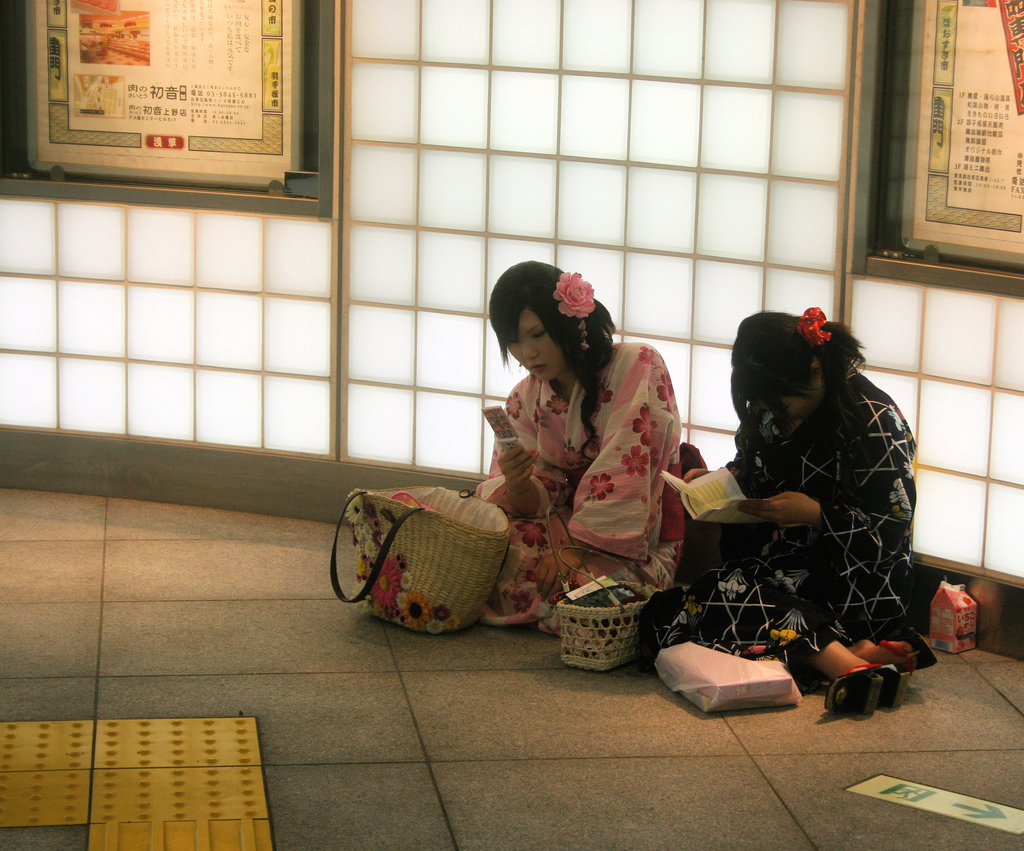
At the Asakusa Station
Then we went exploring in the crowded, lively area around Senso-ji temple. We first went to the bright red temple itself, which was a contrast to some of the stately, refined temples we had seen in Kyoto. We heard a good comparison, that this was a temple of the common people, and those elegant places were the retreats of noblemen.
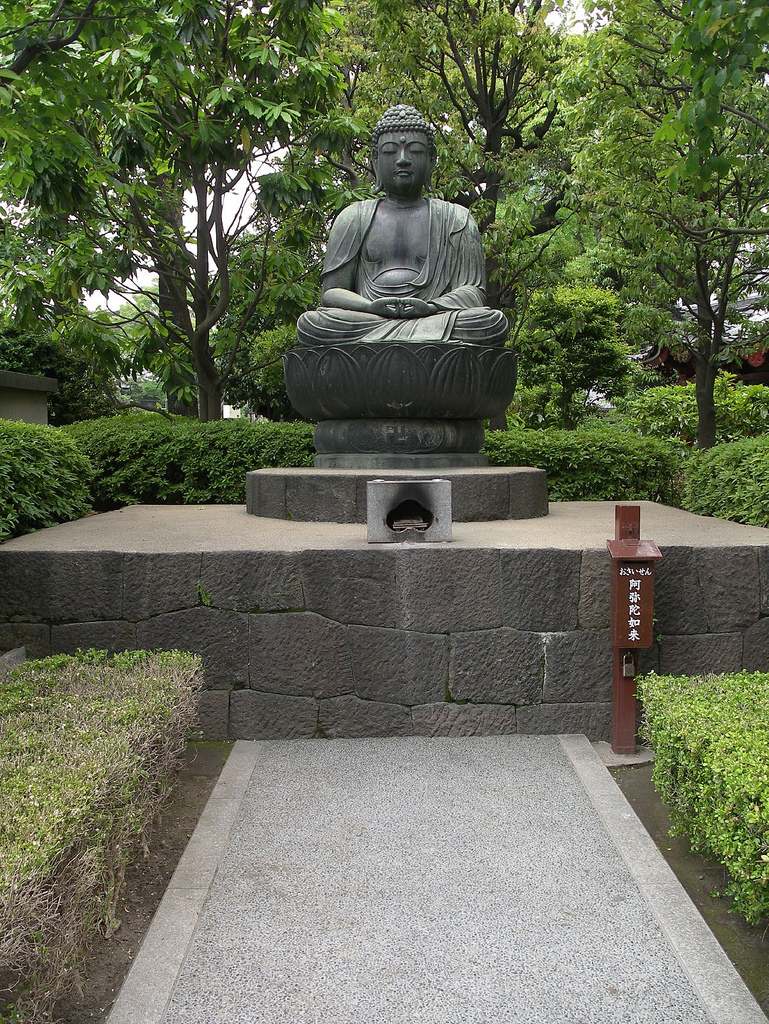
Garden in Senso-ji Temple in Asakusa
Comparing Senso-ji and Sanjusangendo, it was clear that the original purposes were different, even though they both enshrined the goddess Kannon, so they was interesting to see in one day. I guess we had thought about temples as all being the same, but after our trip, we really had learned a lot.
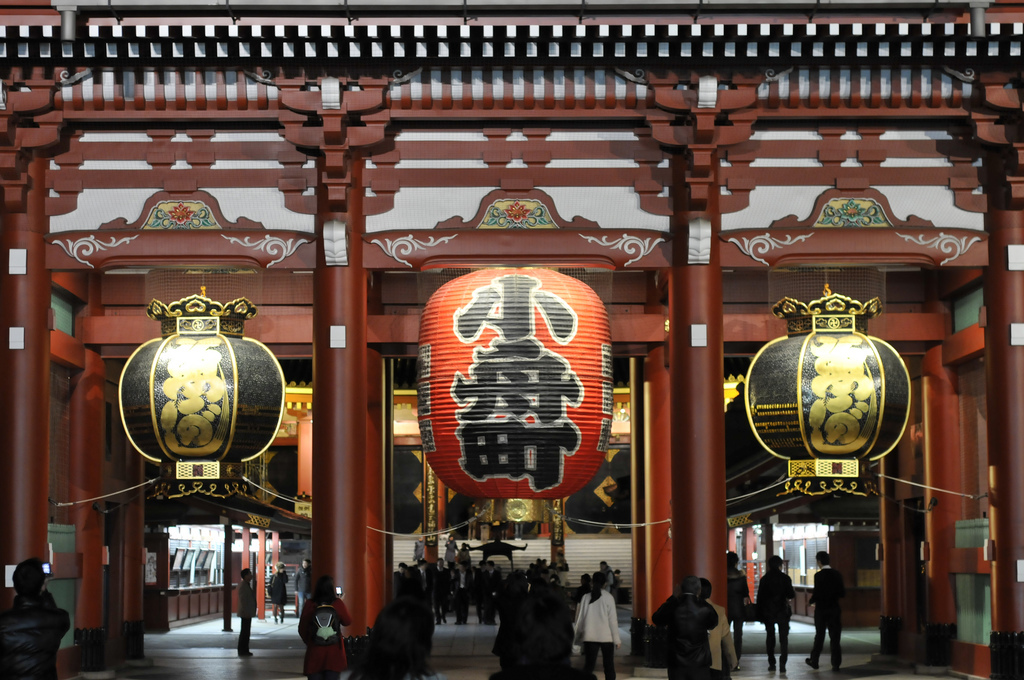
Senso-ji temple
We strolled through the alleys and covered arcades around the temple, amazed at the range of product available. We had read about Kappabashi, or Kitchen Street, on the internet, so were surprised to realize that we had stumbled into that area. Because I love cooking, it was really fun for me!
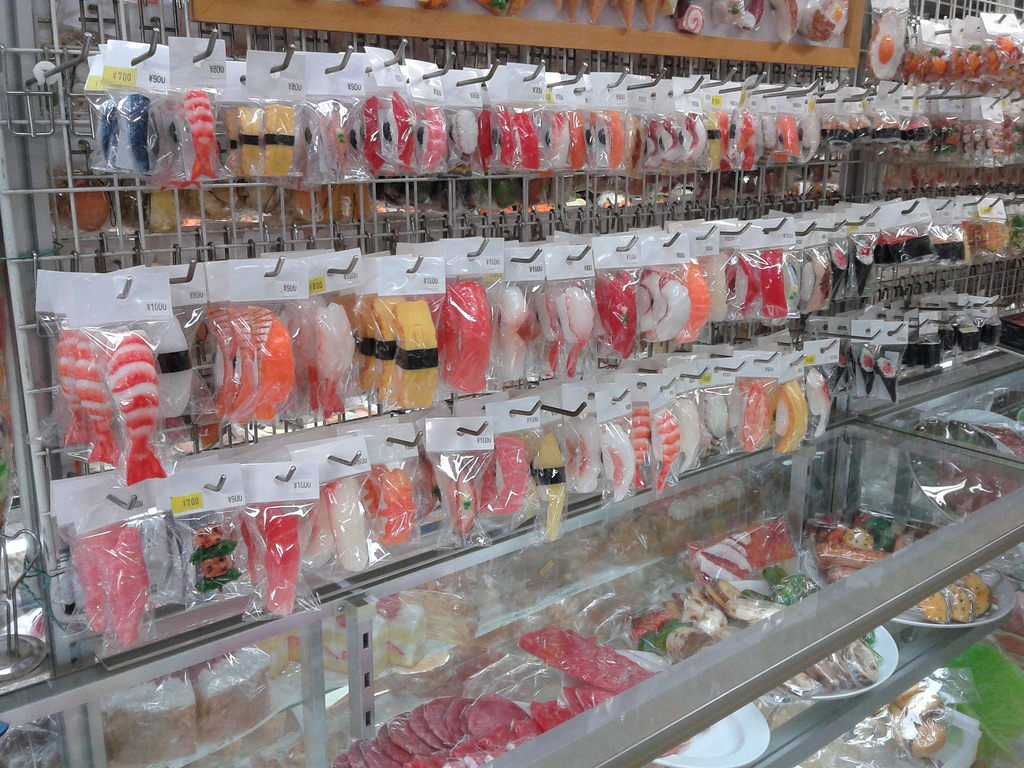
Plastic sushi at Kappabashi
I loved seeing the industrial equipment for restaurant use, and the shops with plates and utensils and thousands of cutters for decorating meals with shapes made of vegetables and fruits.
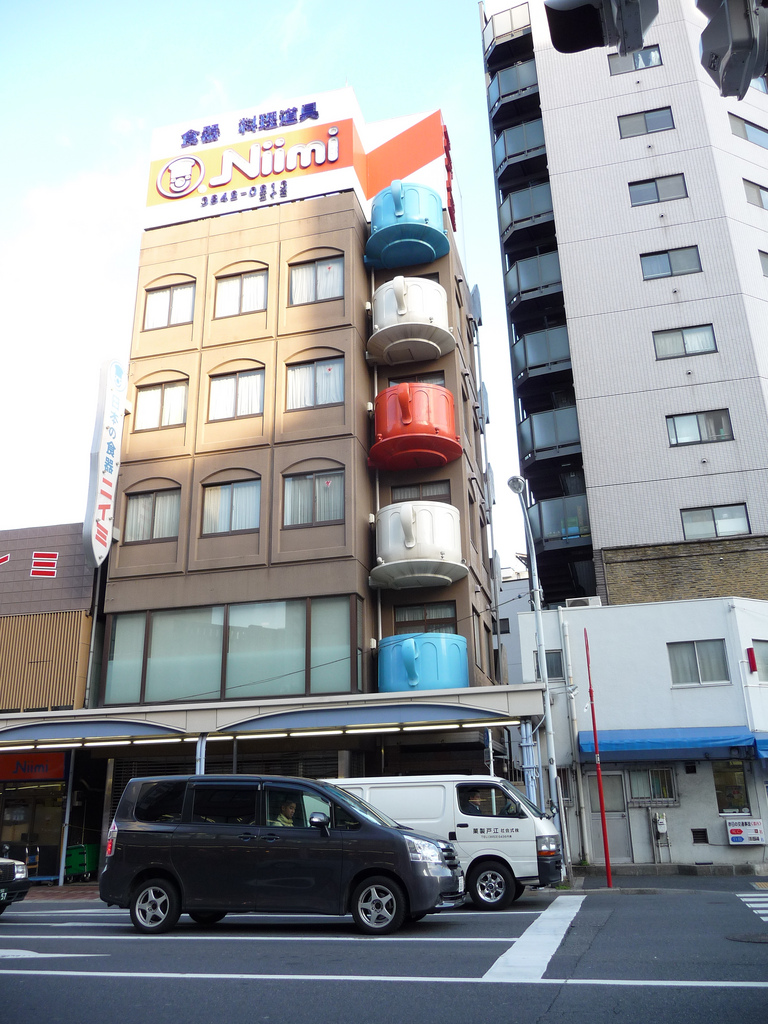
Kappabashi-dori Building
Andrew fell in love with a cutlery shop. The girls were excited to find a few stores that make the plastic foods that appear in all the restaurant windows. The displays looked real, the food ready to eat. We went inside and marveled at the creative products using them, and agreed to get a keychain and magnet as souvenirs. One was a little shrimp sushi, and the other looked just like a tiny cake. Kappabashi even had a shop dedicated to brushes!
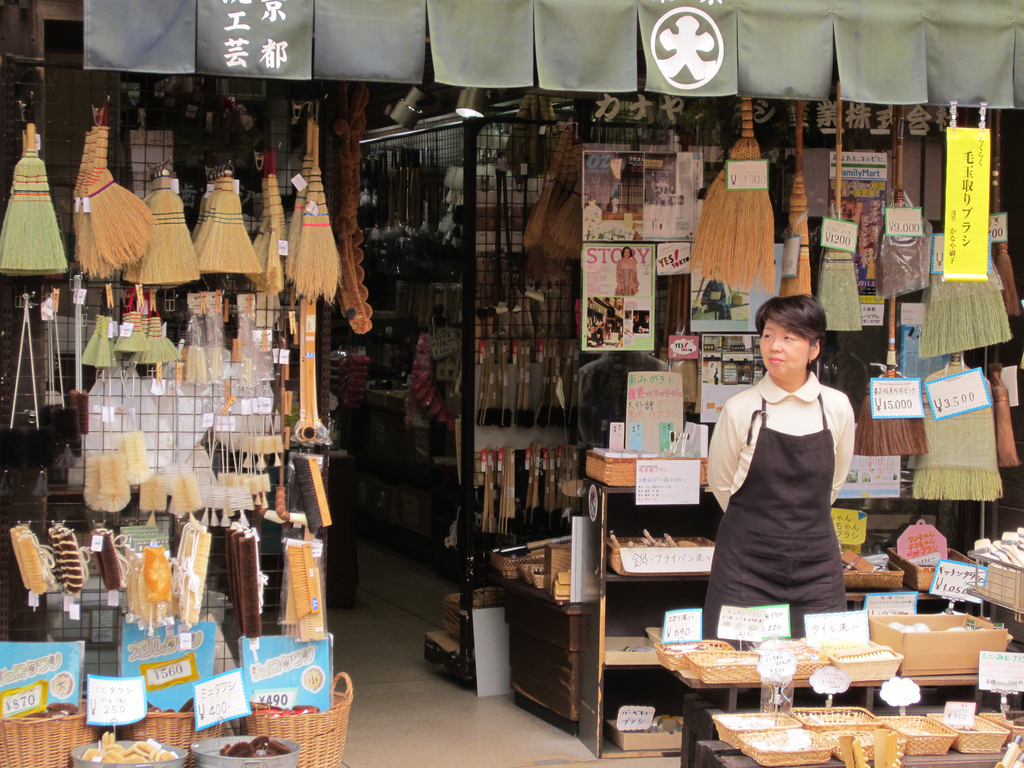
Brush shop in Kappabashi, Denboin-dori
We broke up our walk with dinner in a small okonomiyaki restaurant, then continued walking and window shopping into the evening. We enjoyed seeing the bright neon and hearing the thrumming buzz of the city, and I think none of us wanted to return early to the hotel on our last full day in Japan.
 photos by:
Gwydion M. Williams &
Chris_Eden,
Hyougushi,
Richard, enjoy my life!,
blogefl,
labocho,
Oyvind Solstad,
Flowizm,
Chalky Lives,
Shadowgate,
alq666,
fry_theonly,
Wallslide,
chris pegler
photos by:
Gwydion M. Williams &
Chris_Eden,
Hyougushi,
Richard, enjoy my life!,
blogefl,
labocho,
Oyvind Solstad,
Flowizm,
Chalky Lives,
Shadowgate,
alq666,
fry_theonly,
Wallslide,
chris pegler